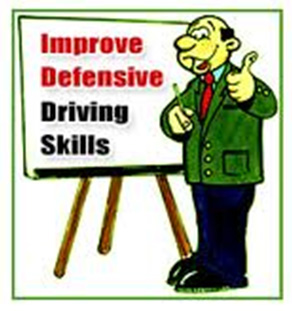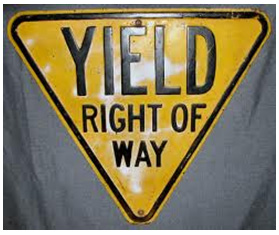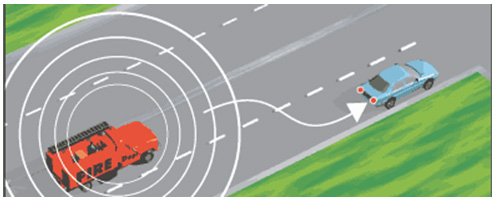 Defensive driving is a form of training for a motor vehicle driver that goes beyond mastery of the rules of the road and the basic mechanics of driving. Its aim is to reduce the risk of driving by anticipating dangerous situations, despite adverse conditions or the mistakes of others. This is achieved through adherence to a variety of general rules, as well as the practice of specific driving techniques.
Defensive driving is a form of training for a motor vehicle driver that goes beyond mastery of the rules of the road and the basic mechanics of driving. Its aim is to reduce the risk of driving by anticipating dangerous situations, despite adverse conditions or the mistakes of others. This is achieved through adherence to a variety of general rules, as well as the practice of specific driving techniques.
Courtesy and Attitude
- Acceptance of responsibility
- If you make a mistake, take responsibility for your actions.
- Alertness
- Always be alert.
- Be ready to handle any driving situation you may encounter.
- Consideration for others, including car occupants
- Be courteous and considerate to those who share the road with you and also to your passengers.
- Foresight
- Be aware of potential hazardous situations ahead of you on the road.
- Good attitude towards other highway users and toward the laws and law enforcement
- Use good judgment in making driving decisions.
Right-of-Way
 Right-of-Way means the right to immediate use of the roadway but use only in such a manner to assure the safety of the other drivers and pedestrians.
Right-of-Way means the right to immediate use of the roadway but use only in such a manner to assure the safety of the other drivers and pedestrians.
- RIGHT-OF-WAY rules indicate who shall yield when there is a potential conflict between vehicles or between a vehicle and a pedestrian. A driver shall give the right-of-way to pedestrians, bicyclists and emergency vehicles at all times.
- Right-of-way rules should be accompanied by common sense and courtesy.
- You should neither insist on taking the right-of-way nor insist that others take it when they are hesitant to do so. If two vehicles enter an intersection from different directions at the same time and the intersection is controlled by stop signs in all directions or the signal light is not working, the driver on the right has the right of way.
- You must yield the right of way to any police car, fire engine, ambulance or other emergency vehicle using a siren and/or red lights.

Drive as close to the right edge of the road as possible and stop until the emergency vehicle(s) has passed.
Never stop in an intersection. If you are in an intersection and see an emergency vehicle, continue through the intersection and then drive to the right as soon as possible and stop.
Emergency vehicles often use the wrong side of the street to continue on their way. They sometimes use a loud speaker to talk to drivers blocking their path.
Driving Environment
Drivers need to understand that the environment and conditions of the roadway are constantly changing. They should be prepared to handle and react to any changes such as weather conditions, traffic, collisions, construction areas, or sunrise and sunset. One good way for a driver to practice is to listen to traffic reports.
Looking Ahead
- In order to avoid last minute moves when driving in traffic, the driver should:
- Look ahead for traffic hazards such as road construction, accidents and detours.
- Leave enough following distance to safely maneuver around hazards or disabled vehicles.
- Look ahead for signal changes such as yellow lights and flashing crosswalk signs.
- A visual lead of 10 to 15 seconds or one block is appropriate when driving in traffic in urban areas.
Planning Your Trip
Planning your trip and how you will get to your destination is part of driving safely. If you have clear directions to your destination, you won’t be tempted to try to read a map while driving. There are many websites that can be used to plan your route prior to leaving for your destination.
 Click for an example of maps and directions http://www.mapquest.com/
Click for an example of maps and directions http://www.mapquest.com/
Weather Conditions
Weather conditions affect visibility and braking distance. Driving becomes more difficult when visibility is reduced or when road surfaces are covered with snow, rain or ice.
Safe Driving Distances
It is important to remember that drivers must keep the vehicle under control at all times. Leaving enough room between your car and the car in front of you is crucial. Adequate following distances and braking distances allow the driver time to slow down or stop when necessary.

